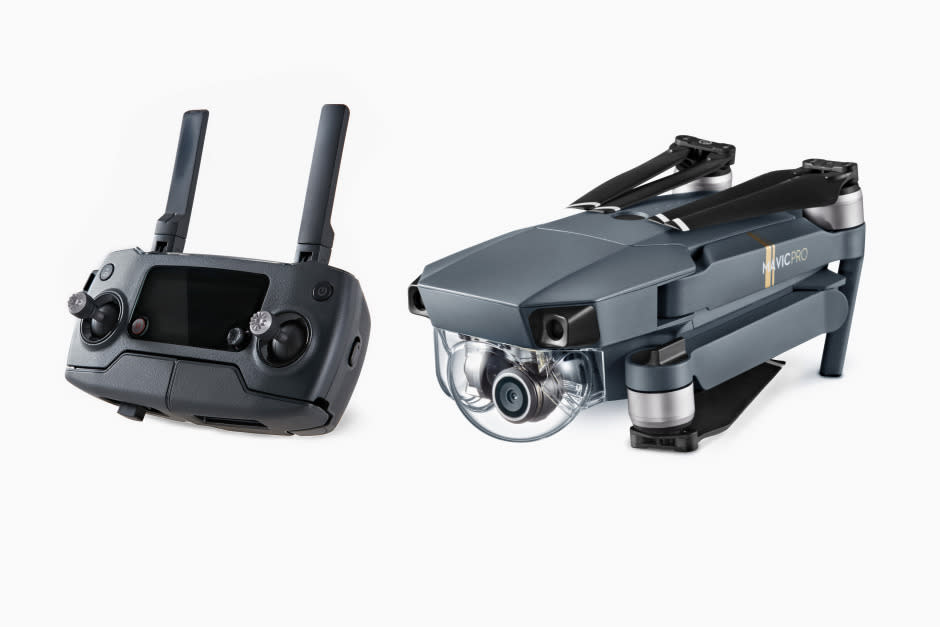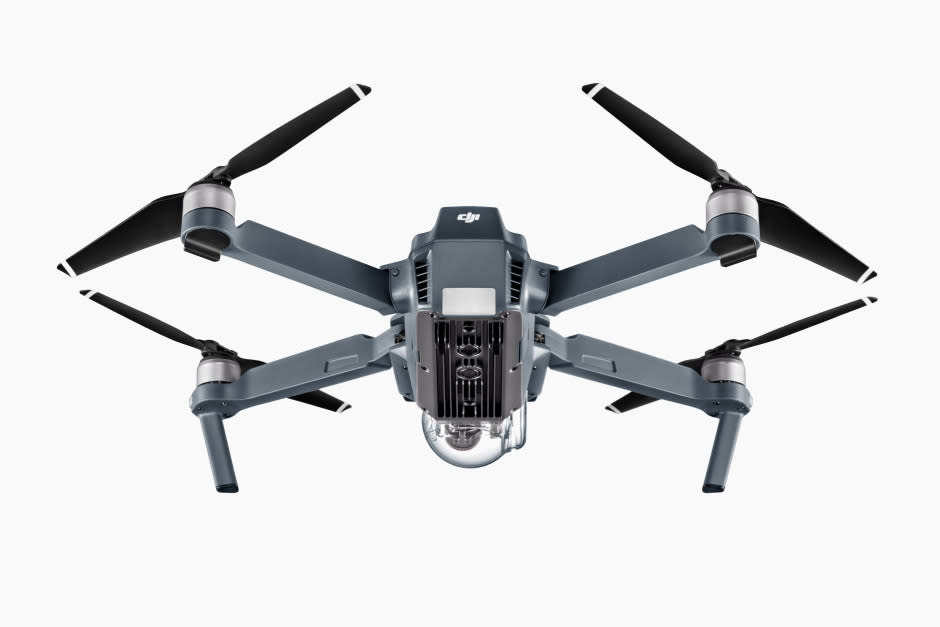DJI took a huge step forward in creating a powerful drone that’s truly portable

It’s said that the best camera is the one you have on you, and more often than not, that’s your smartphone. Phones are ubiquitous, and portable, but even the newest and greatest ones can only capture so much. DJI wants its new Mavic Pro drone to be the sort of thing you could carry with you anywhere—toss it into a backpack, a suitcase, or maybe even a really big pocket—and capture the selfies and envy-inducing Instagram shots of tomorrow.
The oddly named Mavic Pro (who is Mavic, and what is “Pro” about it?) has all of the capabilities of DJI’s most recent top-of-the line drone, the Phantom 4, the company told Quartz. It can avoid objects with as much ease, follow you around at the tap of a button, and land on its own. But it also has a few new tricks up its sleeve: Apart from being considerably smaller than the Phantom 4, it can also recognize objects like cars, people, and animals, and be told to follow them around on its own, even up and down hills or around other obstacles that its predecessor would’ve struggled with. It can be controlled with a new, smaller radio-controller, or through a smartphone. It can also recognize when someone gestures to it, and will fly over to them. Then, if they make a rectangle with their fingers (like a director framing a shot), it will take their picture. It’s not going to be quite as immediate as whipping out an iPhone for a selfie, but the end result will probably look a little more impressive.

The Mavic Pro, folded up next to its controller.
The drone’s 12-megapixel camera can shoot 4K video at 30 frames per second, and it can shoot at an impressively detailed 96 frames per second at 1080p. The drone has a similar battery life to the Phantom 4 as well—about 1 minute less, at roughly 27 minutes. It can’t fly quite as quickly (about 40 mph compared with 45 mph), but DJI is touting the Mavic to be as complete a device in a far smaller package. It also happens to cost about $650 less, as it’ll start at $749. (If you want DJI’s new controller bundled in, that model will cost you $999).
The Mavic Pro goes on sale today (Sept. 27), and DJI says it will ship Oct. 15, before GoPro’s first drone, the Karma, is due to go on sale. The Karma costs roughly the same as the Mavic Pro, but doesn’t seem to fold down nearly as small, and also doesn’t have the sense-and-avoid technologies. (Early DJI Phantom models used GoPro cameras, but newer models have eschewed them for camera technology built in-house as the companies became competitors.)

The cameras the Mavic Pro uses to see the world and not crash into things.
Even though the Mavic Pro is smaller and more powerful, DJI told Quartz that the Phantom line of drones isn’t going anywhere anytime soon, as some customers own accessories they’ll want to keep using, and because the larger Phantoms handle a little better in strong wind.
When we tested out the Phantom 4, DJI told me that this would be a drone that anyone could fly. I didn’t find that to be the case, but there was a lot to like. The Mavic is less cumbersome and can be controlled just from a phone, so there’s a chance it could be the first mass-market drone that anyone would feel comfortable flying. It’ll all depend on the software, which last time out, still left something to be desired.
In the roughly six months since the Phantom 4 was launched, DJI has managed to shrink its components into a device a fraction of its size. The drone industry is moving at a blistering pace, even with commercial regulations in the US only finalized this summer. There are now over 550,000 registered drones in the US, and the Mavic Pro could point the way to a future where people are comfortable and capable of whipping out a drone as they might their cellphone. That’s assuming people start developing some useful apps for these things, though.

Sign up for the Quartz Daily Brief, our free daily newsletter with the world’s most important and interesting news.
More stories from Quartz:

 Yahoo Finance
Yahoo Finance 